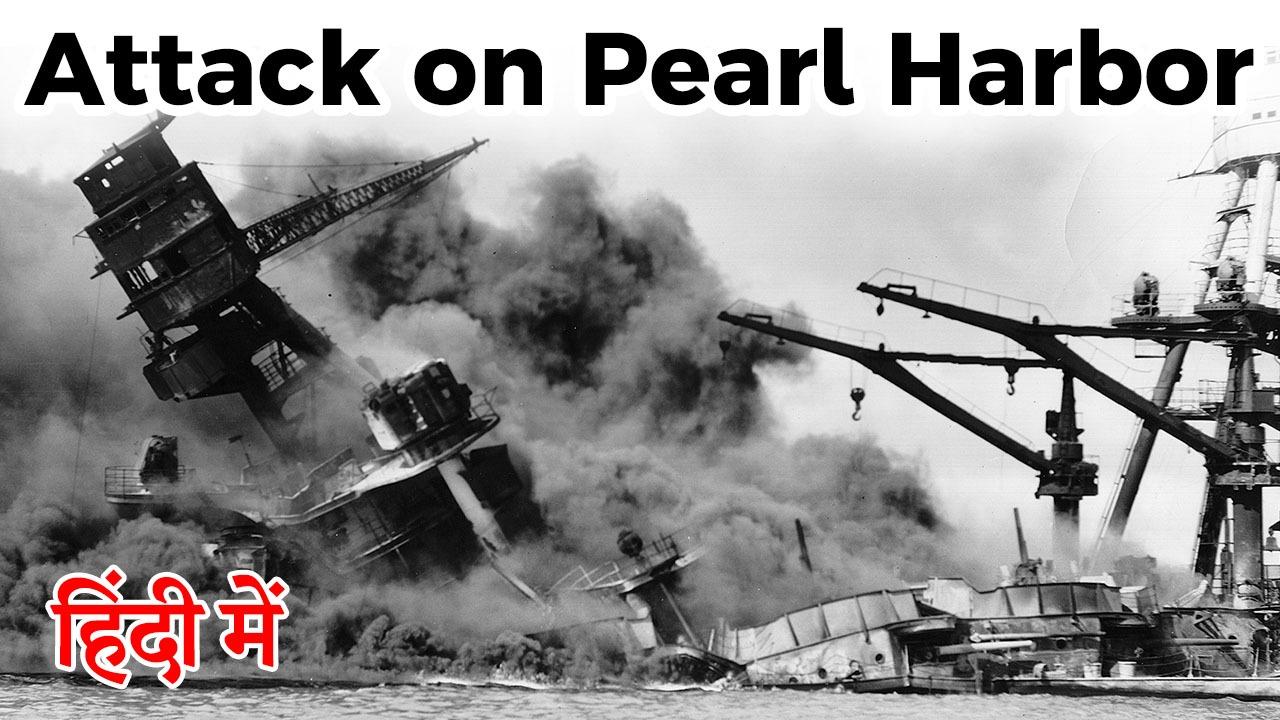Table of Contents
ATTACK ATTACK
- Pearl Harbor is a U.S. naval base near Honolulu, Hawaii, that was the scene of a devastating surprise attack by Japanese forces on December 7, 1941.
- Just before 8 a.m. on that Sunday morning, hundreds of Japanese fighter planes descended on the base, where they managed to destroy or damage nearly 20 American naval vessels, including eight battleships, and over 300 airplanes.
- More than 2,400 Americans died in the attack, including civilians, and another 1,000 people were wounded. The day after the assault, President Franklin D. Roosevelt asked Congress to declare war on Japan.
BACKGROUND
- The attack on Pearl Harbor was a surprise, but Japan and the United States had been edging toward war for decades.
- The United States was particularly unhappy with Japan’s increasingly belligerent attitude toward China. The Japanese government believed that the only way to solve its economic and demographic problems was to expand into its neighbor’s territory and take over its import market.
- To this end, Japan declared war on China in 1937, resulting in the Nanking Massacre and other atrocities.
BACKGROUND
- American officials responded to this aggression with a battery of economic sanctions and trade embargoes. They reasoned that without access to money and goods, and especially essential supplies like oil, Japan would have to rein in its expansionism.
- Instead, the sanctions made the Japanese more determined to stand their ground. During months of negotiations between Tokyo and Washington, D.C., neither side would budge. It seemed that war was all but inevitable.
PEARL HARBOUR
- Pearl Harbor, Hawaii, is located near the center of the Pacific Ocean, roughly 2,000 miles from the U.S. mainland and about 4,000 miles from Japan. No one believed that the Japanese would start a war with an attack on the distant islands of Hawaii.
- Additionally, American intelligence officials were confident that any Japanese attack would take place in one of the (relatively) nearby European colonies in the South Pacific: the Dutch East Indies, Singapore or Indochina.
- To the Japanese, Pearl Harbor was an irresistibly easy target.
ATTACK
- The Japanese plan was simple: Destroy the Pacific Fleet. That way, the Americans would not be able to fight back as Japan’s armed forces spread across the South Pacific. On December 7, after months of planning and practice, the Japanese launched their attack.
- At about 8 a.m., Japanese planes filled the sky over Pearl Harbor. Bombs and bullets rained onto the vessels moored below. At 8:10, a 1,800-pound bomb smashed through the deck of the battleship USS Arizona and landed in her forward ammunition magazine. The ship exploded and sank with more than 1,000 men trapped inside.
ATTACK
- Next, torpedoes pierced the shell of the battleship USS Oklahoma. With 400 sailors aboard, the Oklahoma lost her balance, rolled onto her side and slipped underwater.
- Less than two hours later, the surprise attack was over, and every battleship in Pearl Harbor—USS Arizona, USS Oklahoma, USS California, USS West Virginia, USS Utah, USS Maryland, USS Pennsylvania, USS Tennessee and USS Nevada—had sustained significant damage.
IMPACT OF THE ATTACK
- In all, the Japanese attack on Pearl Harbor crippled or destroyed nearly 20 American ships and more than 300 airplanes. Dry docks and airfields were likewise destroyed. Most important, 2,403 sailors, soldiers and civilians were killed and about 1,000 people were wounded.
- But the Japanese had failed to cripple the Pacific Fleet. By the 1940s, battleships were no longer the most important naval vessel: Aircraft carriers were, and as it happened, all of the Pacific Fleet’s carriers were away from the base on December 7.
IMPACT OF THE ATTACK
- After the Pearl Harbor attack, and for the first time during years of discussion and debate, the American people were united in their determination to go to war.
- The Japanese had wanted to goad the United States into an agreement to lift the economic sanctions against them; instead, they had pushed their adversary into a global conflict that ultimately resulted in Japan’s first occupation by a foreign power.
- On December 8, Congress approved Roosevelt’s declaration of war on Japan. Three days later, Japan’s allies Germany and Italy declared war against the United States.
- For the second time, Congress reciprocated, declaring war on the European powers. More than two years after the start of World War II, the United States had entered the conflict.
World History Free PDF






















 WhatsApp
WhatsApp